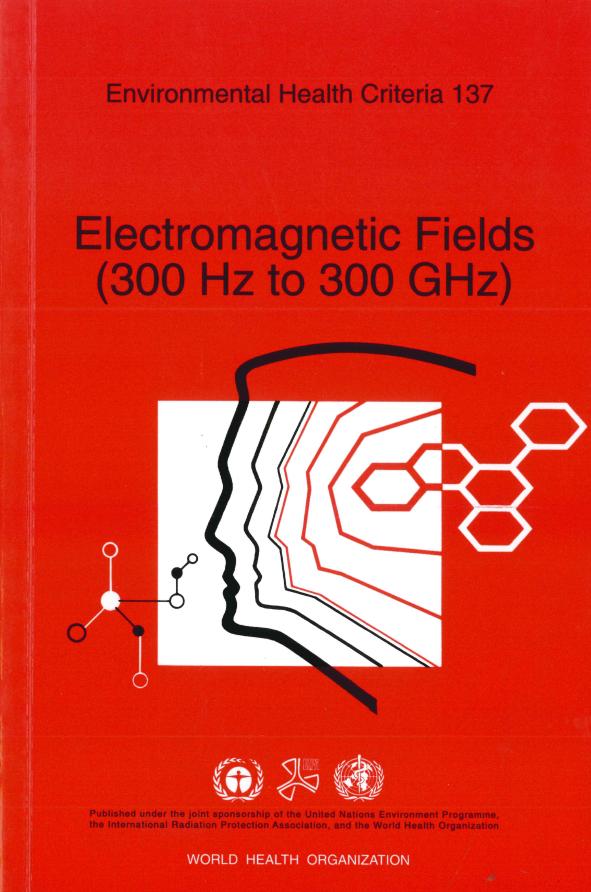EHC 137 on EMF - 1993
ISBN: 92-4-157137-3
Environmental Health Criteria 137: Electromagnetic Fields (300 Hz to 300 GHz). Geneva, World Health Organization; 1993. ISBN 92-4-157137-3.
Published under the joint sponsorship of the United Nations Environment Program, the International Committee on Non-Ionizing Radiation of IRPA, and the World Health Organization - © WHO, Geneva, 1993.
Excerpt: " This publication comprises a review of the data on the effects of electromagnetic field exposure on biological systems pertinent to the evaluation of human health risks. The purpose of the document is to provide an overview of the known biological effects of electromagnetic fields in the frequency range 300 Hz to 300 GHz, to identify gaps in this knowledge so that direction for further research can be given, and to provide information for health authorities, regulatory, and similar agencies on the possible effects of electromagnetic field exposure on human health, so that guidance can be given on the assessment of risks from occupational and general population exposure.
Most radiofrequency (RF) field standards are based on the premise that there exists a threshold specific absorption rate (SAR) of RF energy (for frequencies above about 1 MHz) of 1-4 W/kg, above which there is increasing likelihood of adverse health effects. Below about 1 MHz, standards are based on induced currents in the body, causing shocks and burns. The purpose of updating the original Environmental Health Criteria monograph on radio frequency (WHO, 1981) is not only to provide a description of more completely developed RF dosimetry in humans, but to critically review more recent scientific literature, to determine if the threshold SAR on which standards are based is still valid. With the frequency range covered by the document extended down to 300 Hz, more emphasis is placed on induced currents and other possible mechanisms of interaction."
Published under the joint sponsorship of the United Nations Environment Program, the International Committee on Non-Ionizing Radiation of IRPA, and the World Health Organization - © WHO, Geneva, 1993.
Excerpt: " This publication comprises a review of the data on the effects of electromagnetic field exposure on biological systems pertinent to the evaluation of human health risks. The purpose of the document is to provide an overview of the known biological effects of electromagnetic fields in the frequency range 300 Hz to 300 GHz, to identify gaps in this knowledge so that direction for further research can be given, and to provide information for health authorities, regulatory, and similar agencies on the possible effects of electromagnetic field exposure on human health, so that guidance can be given on the assessment of risks from occupational and general population exposure.
Most radiofrequency (RF) field standards are based on the premise that there exists a threshold specific absorption rate (SAR) of RF energy (for frequencies above about 1 MHz) of 1-4 W/kg, above which there is increasing likelihood of adverse health effects. Below about 1 MHz, standards are based on induced currents in the body, causing shocks and burns. The purpose of updating the original Environmental Health Criteria monograph on radio frequency (WHO, 1981) is not only to provide a description of more completely developed RF dosimetry in humans, but to critically review more recent scientific literature, to determine if the threshold SAR on which standards are based is still valid. With the frequency range covered by the document extended down to 300 Hz, more emphasis is placed on induced currents and other possible mechanisms of interaction."

